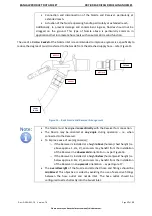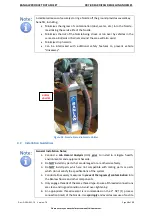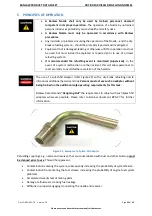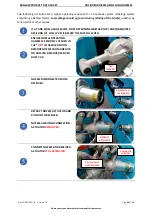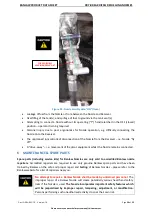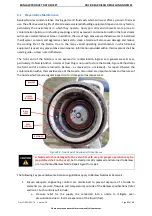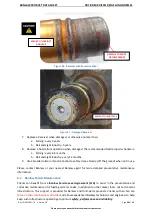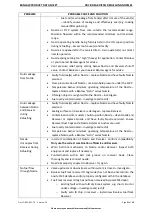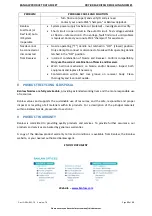
BANLAW PRODUCT DATA SHEET
DRY-BREAK DIESEL REFUELLING NOZZLES
Doc ID: PRH-REF-70 Version: 7.0
Page
21
of
32
Please ensure you have the latest version of this document.
Once the Swivel is secured into the Nozzle, the auto ID circuit voltage available at the Nozzle outlet must
be tested using a voltmeter (or multi-meter) as per Figure 21. This test also establishes any short circuit
within the Nozzle or auto ID circuit. The positive (+) terminal is placed onto the metal Retainer at the
centre of the Nozzle outlet, and the negative (-) terminal is placed onto the exterior of the Swivel.
The
voltage must be 4.6 to 5.0 Vdc
. A lower voltage indicates excessive electrical resistance (i.e. low
conductivity) in the circuit
–
refer section 7. A lack of voltage (i.e. 0Vdc) indicates either the circuit is
isolated (de-energised) or a short circuit
–
refer section 7.
Figure 21 - Testing for Voltage and Short Circuit
4.3
Commissioning Guidelines
There are no specific commissioning requirements for a Banlaw Nozzle. Banlaw do however recommend
witnessing tank pressures and system performance during the initial refuelling process of each unique
refuelling configuration. It is especially beneficial to confirm system performance when a new nozzle is
installed, or existing refuelling system components are modified. These checks provide confirmation
that the system is configured correctly and operating within safe working parameters.
Confirmation of initial system performance will help prevent premature nozzle shut off and tank overfill.
Additionally, these checks ensure that operators do not need to manually override the shut-off
mechanism of the nozzle or are conducting other improper operating practices,
The incidence of operators who manually override the automatic tank pressure shut off function of
Banlaw Nozzles by holding the nozzle in the open position is a principal indication that the system is not
configured properly or being maintained sufficiently.
4.6
≤
Vdc
≤
5.0
SWIVEL
RETAINER











